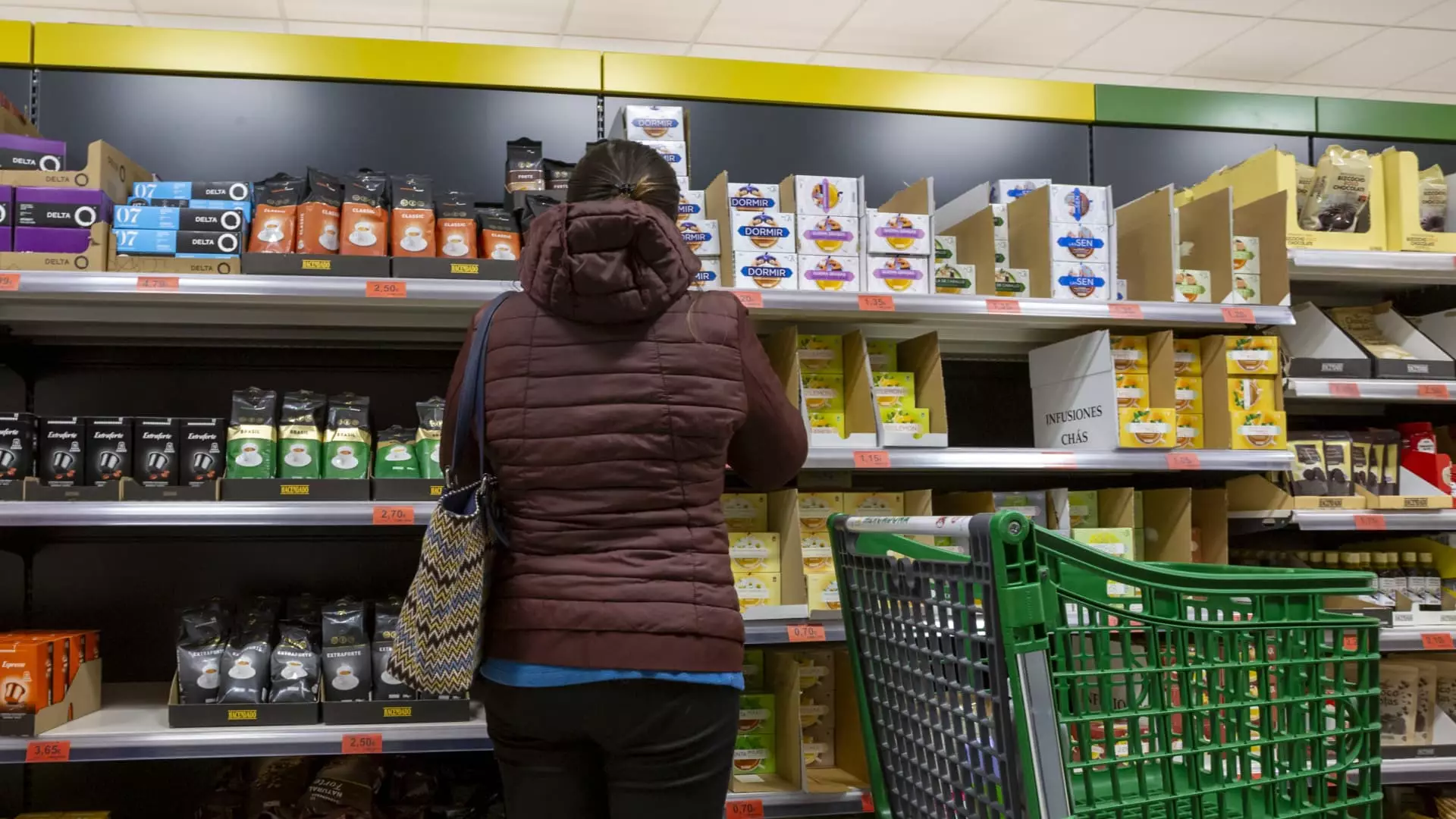Inflation within the eurozone accelerated unexpectedly in January, reaching 2.5% on an annual basis, as reported by Eurostat. This figure surpassed the anticipated rate of 2.4%, which had been predicted by economists, indicating a notable shift in economic conditions. Particularly significant is the rebound in energy prices, which saw a substantial jump of 1.8% year-over-year, a stark contrast to December’s minimal rise of just 0.1%. Such figures provide a crucial snapshot not only of current economic health but also highlight the complexities that policymakers are grappling with as they navigate post-pandemic recovery.
Despite the overall inflation uptick, core inflation—the indicator that excludes volatile items such as food and energy—remained steady at 2.7%. This stability has been consistent since September, suggesting that while energy prices may fluctuate, the underlying inflationary pressures could be more entrenched. This complexity poses significant challenges for those tasked with formulating monetary policy in the region.
In conjunction with the headlining inflation figures, the services inflation rate exhibited a slight dip, decreasing to 3.9% from December’s 4%. Despite this decrease, the fact that services inflation has hovered around the 4% mark for over a year raises questions about its future trajectory. Jack Allen-Reynolds, deputy chief eurozone economist at Capital Economics, has pointed out that predicting when this inflation metric will ease is proving difficult, which could complicate the overall inflation outlook.
Given that services represent a substantial portion of consumer expenditures, these persistent inflation rates can lead to broader implications for economic stability and consumer confidence. Businesses and consumers alike may begin to adjust their spending behaviors in response to the sustained inflation levels, which in turn can influence economic growth.
The European Central Bank (ECB) recently announced a reduction in interest rates by 25 basis points, bringing the key deposit facility rate down to 2.75%. This decision appears to be in direct response to the evolving inflation landscape and the ECB’s ongoing commitment to achieving a medium-term target of 2% inflation. While the ECB remains optimistic about returning to this target, the latest inflation readings underscore the precarious nature of this goal.
Allen-Reynolds notes that the recent inflation data is unlikely to alter ECB policymakers’ perspectives on future interest rate adjustments. With services inflation still notably high, the ECB is likely to adopt a cautious approach, favoring small incremental changes rather than significant rate cuts. This strategy suggests that while there is a path towards easing monetary policy, the inherent uncertainty around inflation metrics calls for vigilance.
Looking ahead, analysts like Allen-Reynolds believe that inflation may approach the ECB’s target by summer, potentially falling lower as the year progresses. However, the economic climate is contoured by various external factors, including potential tariffs imposed on EU goods by the U.S. Such tariffs could inadvertently exacerbate inflation pressures, as noted by Bert Colijn, chief economist at ING. He highlights the risk that additional tariffs will lead to higher consumer prices, thereby complicating the ECB’s efforts to stabilize inflation.
In light of these challenges, key eurozone economies have reported mixed consumer price index figures—like France at 1.8% and Germany at 2.8%—further adding layers of complexity to the inflation narrative. Policymakers must navigate these figures with caution, considering both domestic economic conditions and broader geopolitical tensions.
The evolving landscape of eurozone inflation presents a multifaceted challenge to both consumers and policymakers. As energy prices surge and core inflation remains persistent, the ECB must craft a delicate balance in its monetary policy strategy. The interplay of domestic conditions and external factors like tariffs will inevitably shape economic recovery trajectories. Stakeholders must remain vigilant, ready to pivot as new data emerges, to ensure the long-term stability of the eurozone economy. The ongoing debates surrounding inflation not only reflect current economic realities but also signal the potential hurdles that lie ahead in achieving sustained economic growth.


Leave a Reply